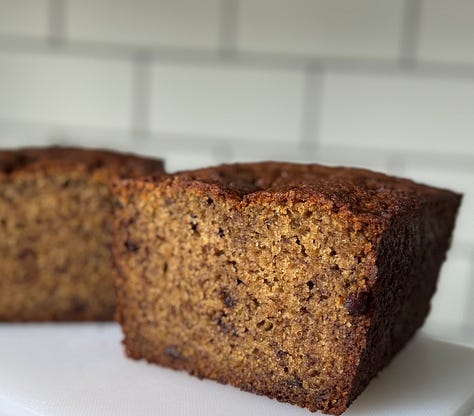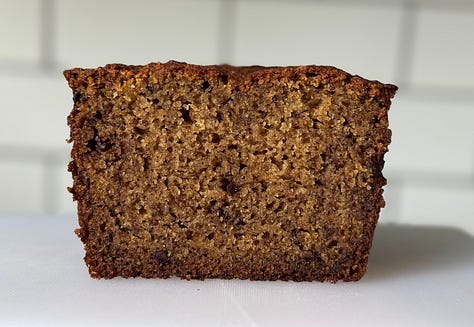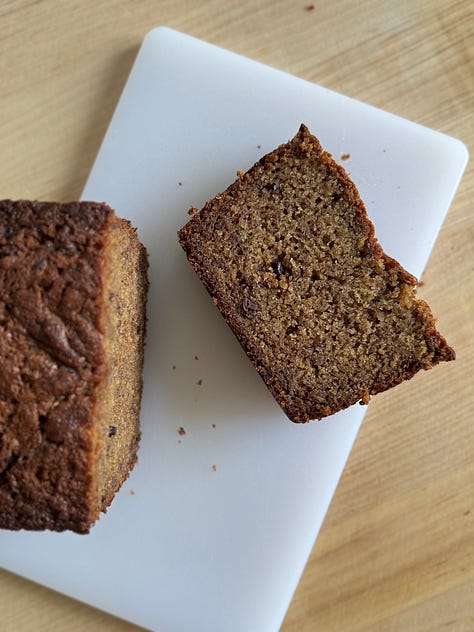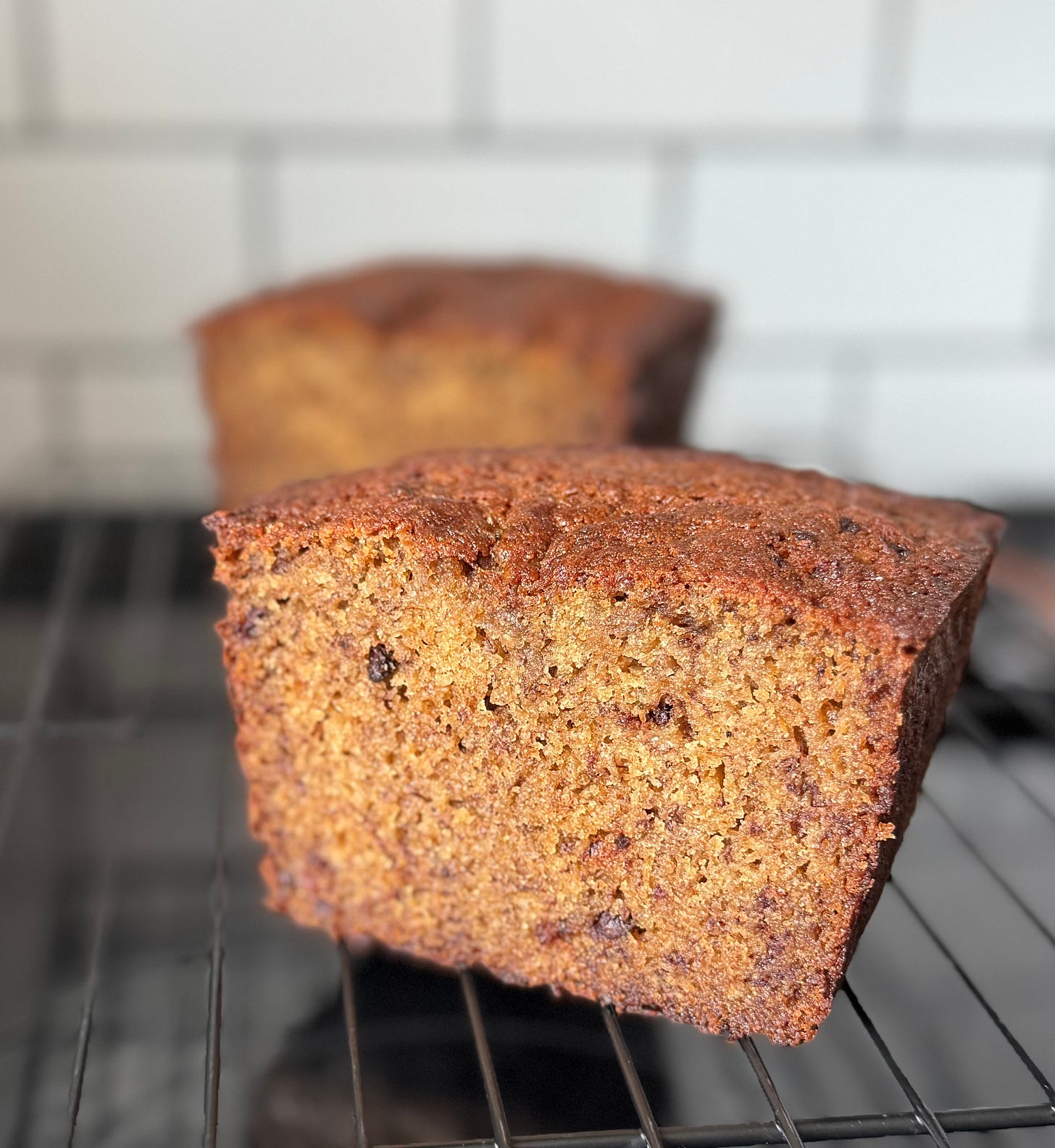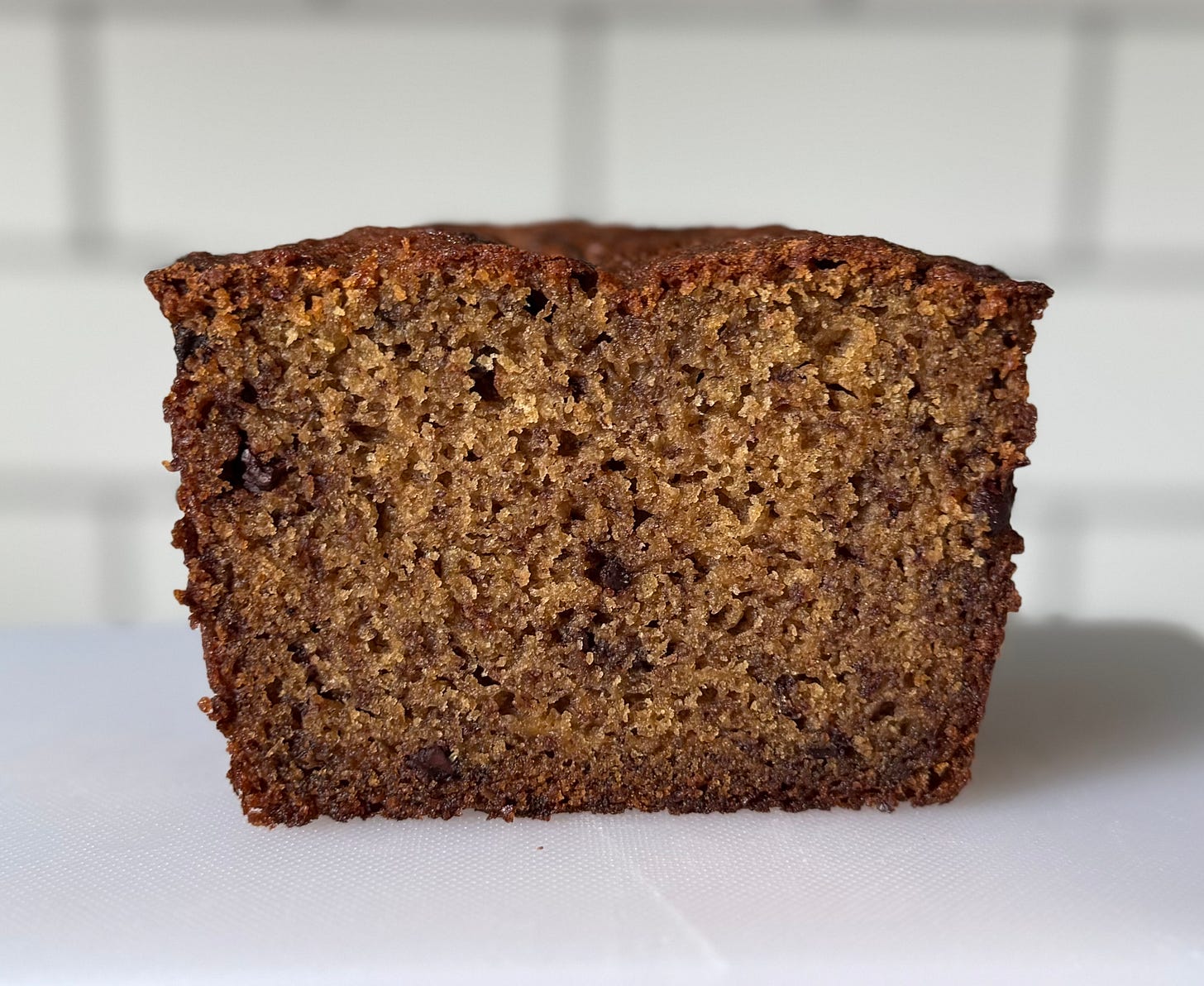Banana bread—and most quickbreads, if we’re being honest—are desserts masquerading as breakfast. If you want to eat cake for breakfast, I won’t stop you. But I will point out that most quickbreads, cakes, and desserts are far too sweet. I once had someone tell me, with an exasperated sigh, “Ryan… your desserts aren’t sweet.” Naturally, I straightened my spine, narrowed my eyes, and said, “Yes, they are. They’re balanced. You’re just used to things that come out of a box.”
I believe desserts can be indulgent without being cloying. Sugar should support the flavors, not drown them. When I develop a recipe, I start with a clear vision of the result I want. For this banana bread (cake), I wanted it to be sweet but complex, with a nutty depth that didn’t rely on actual nuts. The banana flavor needed to be bold but not overpowered by spices or sugar. Recipe development is equal parts experience, intuition, and trial and error. Sometimes, I nail it on the first try. Other times, I fail spectacularly—but that’s part of the fun. I find it’s always very helpful to know what I’m going for before I begin, that way I can figure out what ingredients, methods, or techniques I need to achieve my goal. While there are a few formulas I know that once committed to memory, can be used as a foundation to begin many things and create something new, sometimes what you want to do doesn’t always fit into a standard formula. Situations like that require a lot more knowledge, more experimentation, and more patience than anything else.
I’ve been oddly into rye flour lately (mostly because I have a ton that I’m trying to use up) so it’s been finding its way into recipes lately, but I kind of love it. You’ll find it again here in this recipe. When it comes to spices, I often think that desserts are over-spiced. The biggest offender is any dessert involving pumpkin (bread, pie, etc). Pumpkin is one of my all-time favorite ingredients in both sweet and savory applications (love a soup or a curry, but hate a pumpkin spice latte). It’s almost like people like the idea of pumpkin, but what they really want and are familiar with is spice—they want a spice cake. So when I sat down to think about how to complement and amplify my banana bread recipe, I started to think about what spices should and shouldn’t be present. For years, especially when I first started my journey as a chef, I would turn to The Flavor Bible and learn what ingredients worked and paired well with each other. It certainly played a part in educating my palate on what works and what doesn’t, the other part is instinct.
I will admit, during the development of this particular recipe, I accidentally fell down a chemistry rabbit hole. Sometimes that happens, one thing you know you’re clawing through your spice cabinet trying to decide what to use and then suddenly three hours later you know the chemical makeup of clove and nutmeg. I can get really excited about learning about ingredients, and sometimes, the knowledge is fun to know but not entirely useful. This time around, I don’t even know how I got there, but I did learn that clove is a very unexpected ally of banana. Chemically speaking, bananas owe their characteristic aroma to a compound called isoamyl acetate, which delivers that familiar, sweet, and slightly tangy scent we associate with perfectly ripe bananas. Clove, meanwhile, carries eugenol, a powerful aromatic compound that is warm, rich, and spicy. When these two compounds meet in the heat of your oven, they interact in a way that amplifies the banana’s natural sweetness and complexity, making banana taste, well—more like banana.
Eugenol is a flavor enhancer, meaning it doesn’t just bring its own spicy notes to the bread but also highlights and deepens other flavors it mingles with. Its warm, slightly woody profile bridges the gap between the sweetness of sugar and the caramelization of the bananas, creating a richer, more harmonious flavor.
On a metaphysical level, clove has long been considered a spice of clarity and focus, amplifying the energy of other ingredients around it. It’s used in a lot of spells, magical powders, and rituals. In the same way, it elevates banana bread to something more vibrant, coaxing out the brightest, boldest banana notes while blending into the background so much that you wouldn’t even know it was there. So when that first slice melts on your tongue, it isn’t just banana you’re tasting—it’s the whisper of spice working its magic, turning the ordinary into something extraordinary. It helps with something that you’re baking, which can mellow from the batter you tasted before it went into the oven. It’s much like an ice cream or sorbet base, it should taste almost too strong or too sweet in the case of sorbets, because once frozen, the flavor won’t be as bold as intense.
I do get a little cheffy and toast whole cloves in a dry skillet for a few minutes to bring out the oils, and then I grind them to a powder myself using a mortar and pestle. Baking, after all, is a form of alchemy—or witchcraft. I would’ve done the same thing with the cardamom in this recipe, but I only had ground cardamom on hand, so that’s what I used. Speaking of which, I’ve chosen to use another warm spice like cardamom rather than cinnamon, mostly because I think too many things rely on cinnamon and I think cardamom is a lovely, slightly floral and underappreciated spice that often gets overshadowed by its more ubiquitous and overly-familiar friend, cinnamon. There isn’t a tremendous lot of it here, so if you don’t like cardamom don’t freak out, but if you must, you can always swap it out for cinnamon.
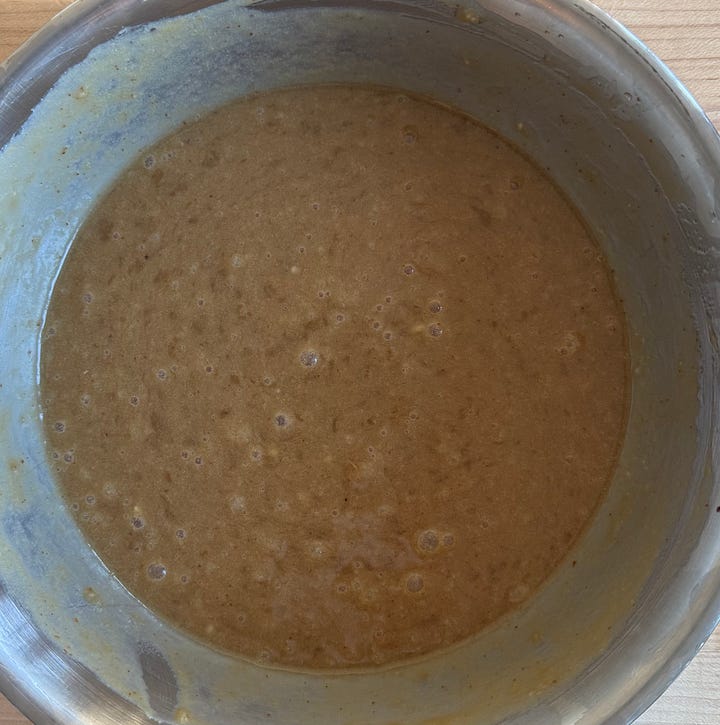
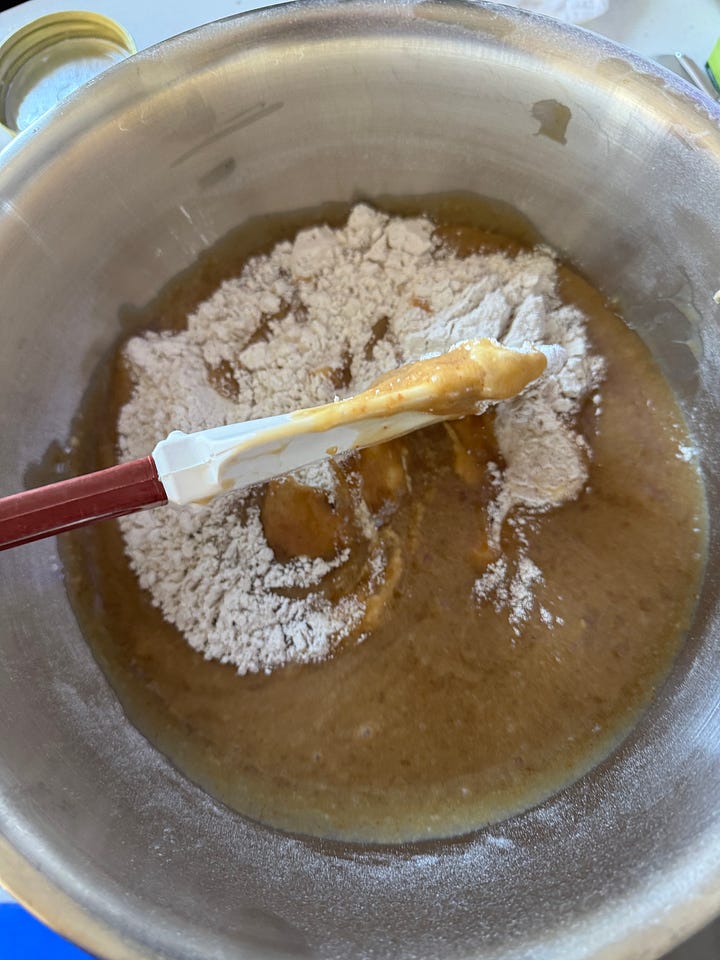
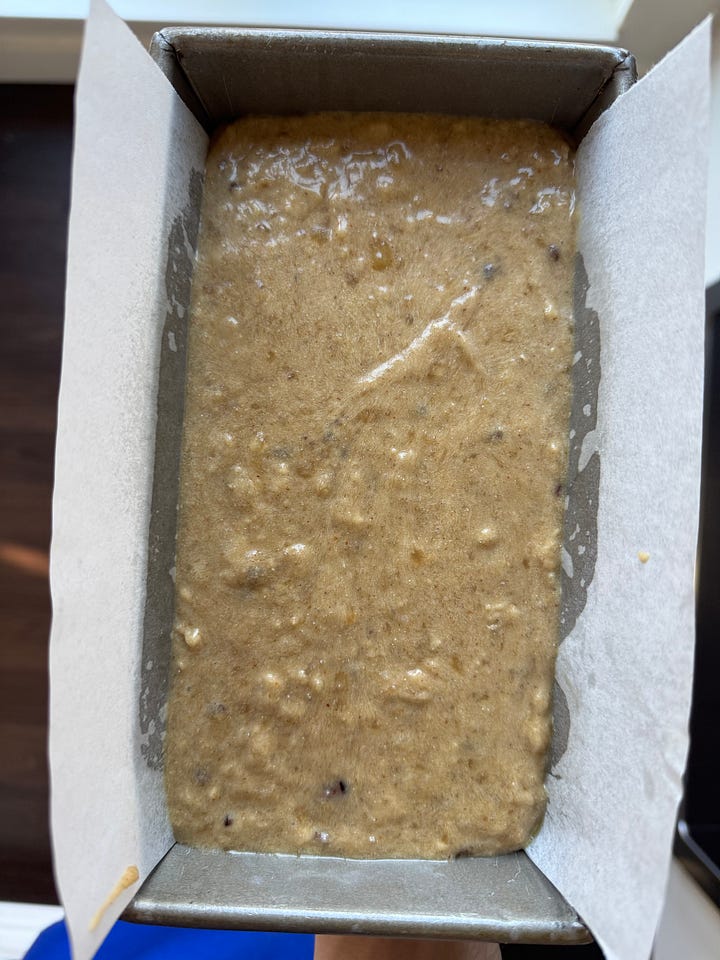
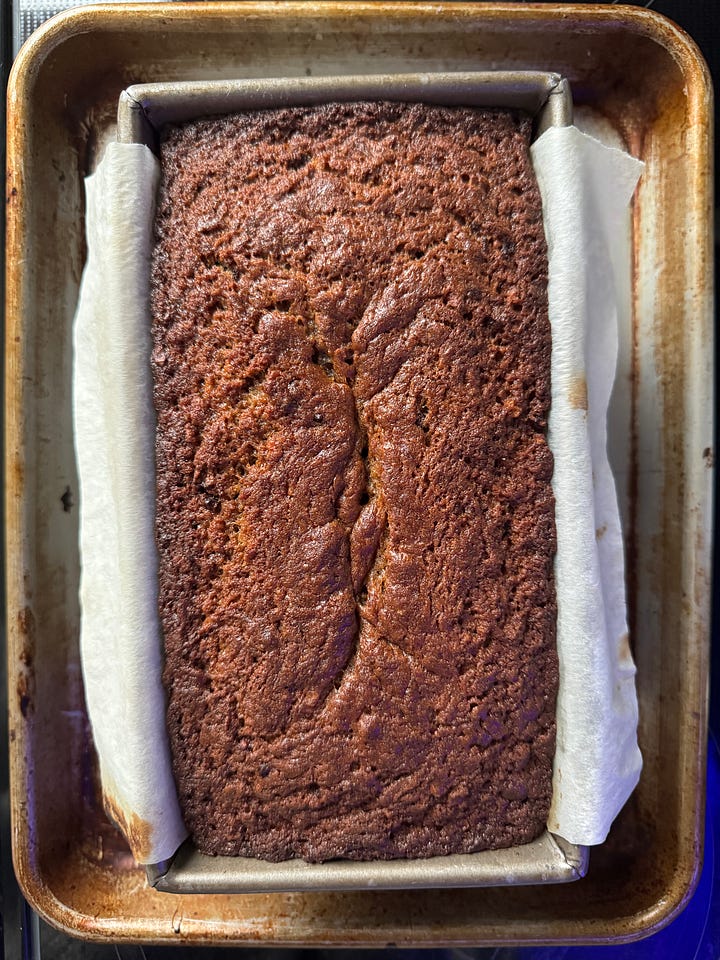
When it comes to baking certain kinds of cakes, cookies and quickbreads, sugar and fat play important parts. I find that it’s really helpful to achieve the result I’m going for by using a combination of saturated and unsaturated fat. The flavor that people like and adore in baked goods tends to come from the saturated fat, things like butter, and the moistness comes from the unsaturated fat, like the oil in this recipe. I’ve browned the butter in this recipe because I love the flavor (it’s one of my favorites) and it adds a nice nutty depth to the cake, no—bread.
I’ve used a combination of white granulated sugar and dark muscovado sugar (another ingredient I’m obsessed with). The muscovado works well with baking soda, which needs an acid to be activated. Which brings me to the other acidic ingredient in this recipe, the crème fraîche. Of course, you can buy it, but it’s just as easy and more affordable to make your own. Take 1 cup of heavy cream, add 2 Tablespoons of buttermilk or Greek yogurt to it, whisk it up, cover it, and let it sit at room temperature for 24-48 hours then transfer it to a clean container and place it in the fridge. The texture will be light, and creamy and have an incredibly pleasant tang.
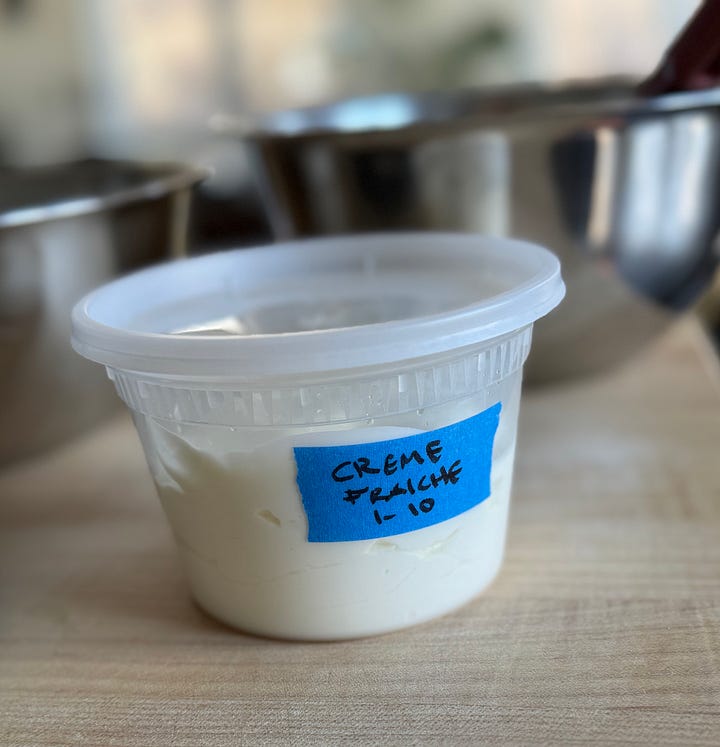
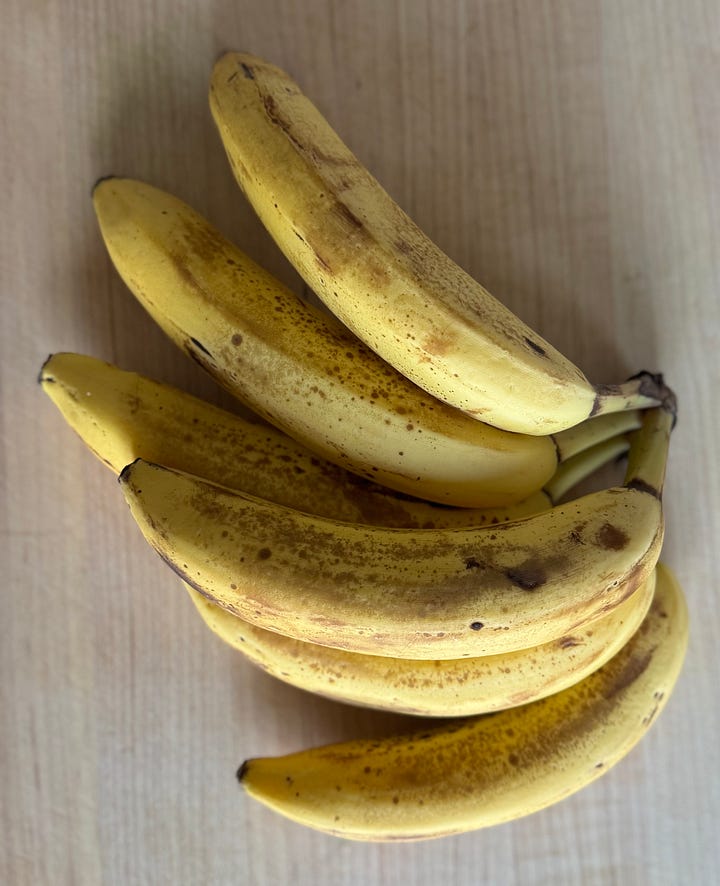
Many recipes for banana bread will have you using extremely overripe bananas, ones that are falling apart, sickly sweet, and on the verge of being too sloppy to handle (sounds like me in my early twenties). But I find that using bananas that are that ripe makes a bread that is just a little too sweet, and masks the banana flavor. I like to use baanans that have quite a few specks of brown and black, but no green. They shouldn’t be fully yellow, but they shouldn’t be overripe either. Because of the fiber present at this level, it will help with the structure of your banana bread. Some people like to roast their bananas in the oven or microwave to speed-ripen them, but I prefer that nature does that process for me. It just…isn’t quite the same in my opinion. Expediting in this way doesn’t yield the same depth or structure.
I like nuts (love them), I just don’t usually want them in my baked goods. I don’t want them in a brownie, I don’t want them in a muffin, and I certainly don’t want them in a quickbread. They get a little soft and they aren’t as soulful as I think a nut should be. I do opt for caramelized cocoa nibs instead, sometimes referred to as sweetened cocoa nibs. Their crunch also softens a little during the bake, and so does their bitterness, adding something that isn’t as sweet or rich as chocolate, and infusing a bit of complexity without overpowering the banana flavor like chocolate I feel often can.
This is another recipe that benefits from resting the batter. I’m sorry, you’re going to have to get used to that. Kind of like how ChefSteps likes to sousvide everything, I’m like that about resting batter. So between letting your bananas ripen, making your crème fraîche, and resting the batter, this does take a little planning and patience, but…don’t most things that are worth having and doing?
